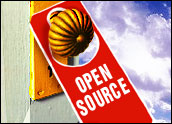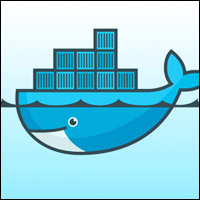
The Linux Foundation has come a long way since initiated in 2007 as the fusion of the Open Source Development Lab (OSDL) and Free Standards Group. At its start, I wondered why there was no membership or representation from Canonical, which was the hottest thing in Linux at the time.
Today, Canonical is a member of The Linux Foundation and theorganization continues to grow in its core of system software and Linuxas well as in mobile devices and, more recently, the automotive industry– among my predictions for Linux strength in 2012.[*Correction – March 13, 2012]
The Linux Foundation has also gained some significant members and new groups of collaborators — the latest batch including graphics and microprocessor giant Nvidia.
I believe the move was driven primarily by Nvidia’s desire to participate, integrate and collaborate on Linux as the open source operating system continues to grow and dominate in several key industries, including enterprise servers, mobile and embedded electronics, and high-performance computing (HPC).
I also believe Nvidia’s drivers for joining The Linux Foundation are indicative of the forces fueling more Linux collaboration, as well as more use of open source software in key areas such as cloud computing.
The Collaboration Factor
The Linux Foundation has become a technically heavy consortium of the biggest players in the industry. Specifically, in silicon and hardware, you’ll find a lengthy list of the world’s top chipmakers in PCs, servers, mobile devices and more among the membership of The Linux Foundation.
As I’ll discuss a bit more inn the “Apple factor” below, the more interesting list to watch now is the one with companies that have not joined. The Linux Foundation is also a testament to how far collaboration among competitors has come.
Working with direct rivals may have been unthinkable 10 years ago, but Linux, open source and organizations such as The Linux Foundation have highlighted how solving common problems and easing customer pain and friction in using and choosing different technologies can truly drive innovation and traction in the market.
The HPC Factor
I’ve covered the dominance of Linux in supercomputing and HPC for quite some time.
There’s no question that Nvidia is among vendors increasingly serving the HPC market, and joining The Linux Foundation helps Nvidia to more deeply integrate with and support Linux and more aggressively go after these customers.
The Apple Factor
Even though there was some obvious jabbing going on between Apple and Nvidia with the recent new iPad event, I don’t think Nvidia decided to join the LF to simply strike back at Apple. However, the effect of Nvidia joining may indeed have an impact on Apple’s plan.
It would not be the first time that Linux and Android served as an attractive alternative to those disenfranchised or frustrated with Apple.
As I mentioned in the previous section on collaboration, the vendors that have not joined The Linux Foundation typically find themselves as the odd man out in some key technology areas, and this includes Apple.
The Open Source Factor
Nvidia’s move to join The Linux Foundation, like many other things, was met by skepticism among some free and open source software supporters. While companies such as Microsoft or Nvidia have a difficult or impossible challenge in changing perceptions about their intentions and actions with open source software communities, this can sometimes put these companies in an aggressive, active mode when it comes to dealing with open source.
Though it may have lagged on supporting Linux drivers a decade ago, Nvidia seems to be fully aware of the need to collaborate and participate in open source software and Linux development. Its more recent support and contribution to Linux in graphics and HPC are indicative of what we should expect in terms of the company’s Linux Foundation membership.
If the effort to join The Linux Foundation is indeed limited largely to a symbolic move and the Linux lip service anticipated by Nvidia’s critics, then the company will likely be called out for its lack of true effort. However, I suspect Nvidia is fully aware of this and fully intends to embrace its new club, more deeply support Linux and other open source software in a variety of devices and markets, and help fuel the true coopetition that makes The Linux Foundation run.
*ECT News Network editor’s note – March 13, 2012: The original version of this column incorrectly stated that Canonical was not a member of The Linux Foundation.


















































see http://www.linuxfoundation.org/about/members
They joined in 2008 and their membership may be mainly about mobile stuff as The Linux Foundation no longer seems to have a desktop committee/group.